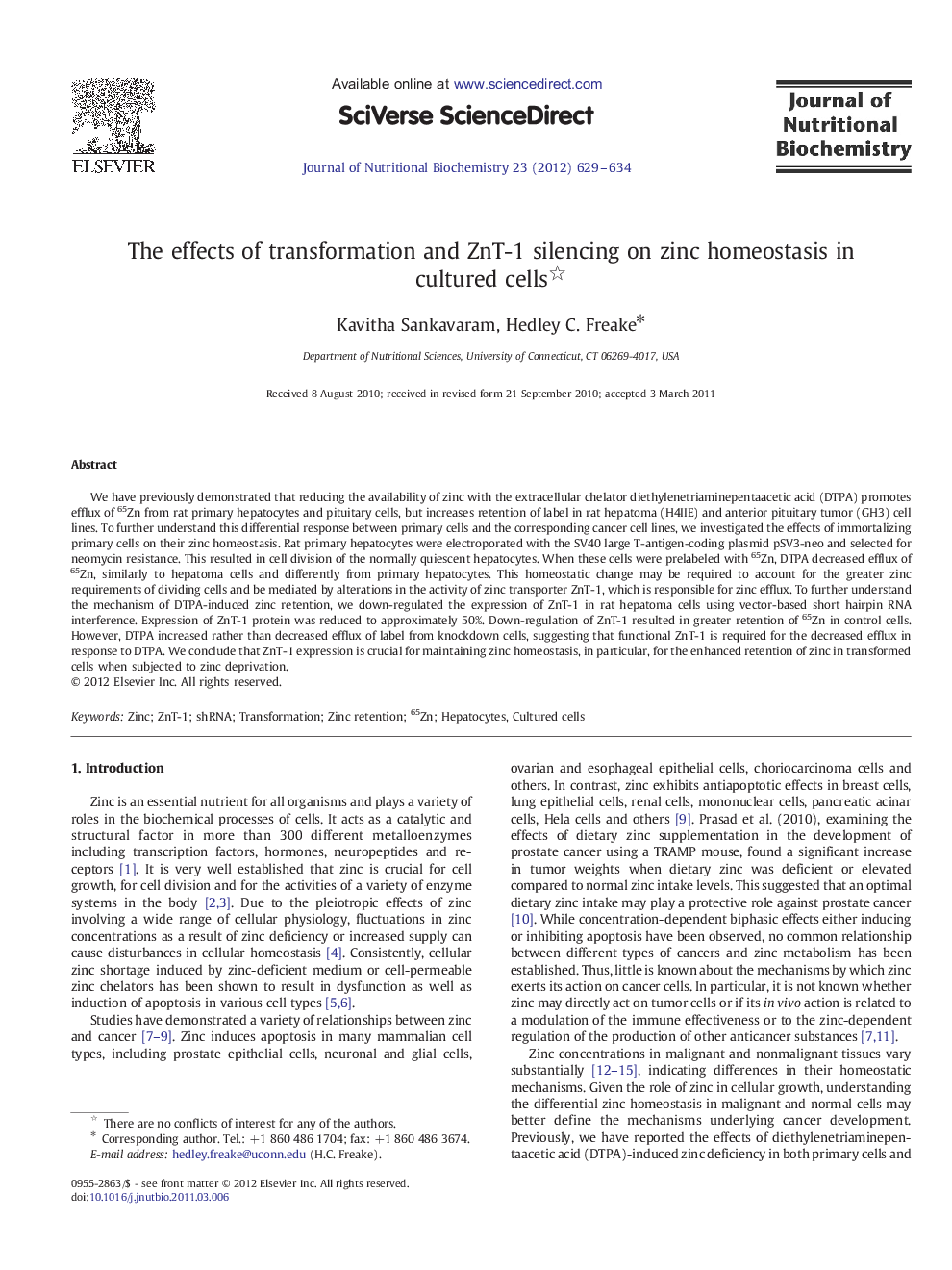| Article ID | Journal | Published Year | Pages | File Type |
|---|---|---|---|---|
| 1990436 | The Journal of Nutritional Biochemistry | 2012 | 6 Pages |
We have previously demonstrated that reducing the availability of zinc with the extracellular chelator diethylenetriaminepentaacetic acid (DTPA) promotes efflux of 65Zn from rat primary hepatocytes and pituitary cells, but increases retention of label in rat hepatoma (H4IIE) and anterior pituitary tumor (GH3) cell lines. To further understand this differential response between primary cells and the corresponding cancer cell lines, we investigated the effects of immortalizing primary cells on their zinc homeostasis. Rat primary hepatocytes were electroporated with the SV40 large T-antigen-coding plasmid pSV3-neo and selected for neomycin resistance. This resulted in cell division of the normally quiescent hepatocytes. When these cells were prelabeled with 65Zn, DTPA decreased efflux of 65Zn, similarly to hepatoma cells and differently from primary hepatocytes. This homeostatic change may be required to account for the greater zinc requirements of dividing cells and be mediated by alterations in the activity of zinc transporter ZnT-1, which is responsible for zinc efflux. To further understand the mechanism of DTPA-induced zinc retention, we down-regulated the expression of ZnT-1 in rat hepatoma cells using vector-based short hairpin RNA interference. Expression of ZnT-1 protein was reduced to approximately 50%. Down-regulation of ZnT-1 resulted in greater retention of 65Zn in control cells. However, DTPA increased rather than decreased efflux of label from knockdown cells, suggesting that functional ZnT-1 is required for the decreased efflux in response to DTPA. We conclude that ZnT-1 expression is crucial for maintaining zinc homeostasis, in particular, for the enhanced retention of zinc in transformed cells when subjected to zinc deprivation.
